


xxxxxHenry Fielding began his writing career as a playwright, his most memorable work being Tom Thumb, produced in 1730. However, in 1737 a satirical work attacking the government and its chief minister Robert Walpole put an end to his time in the theatre! He began writing as a novelist in 1742, producing Samela and then Joseph Adams, both satirical attacks upon the bourgeois morality of Samuel Richardson's prudish Pamela. His major work, and one which did much to develop the novel as a literary form, was his Tom Jones of 1749. A story full of high-
HENRY FIELDING 1707 -
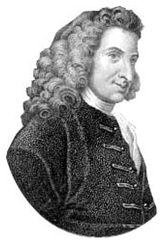 xxxxxThe History of Tom Jones, a Foundling, Henry Fielding's masterpiece of 1749, did much to develop the form of the modern novel. Tom's high-
xxxxxThe History of Tom Jones, a Foundling, Henry Fielding's masterpiece of 1749, did much to develop the form of the modern novel. Tom's high-
xxxxxFielding was born at Sharpham Park in Somerset, his family claiming descent from a branch of the Habsburgs. He was educated at Eton, and studied classics at Leiden University until his father could no 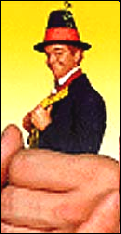 longer afford his allowance. On returning to London in 1729, he was faced with making his own living. As he put it at the time "I have no choice but to be a hackney writer or a hackney coachman". Fortunately for English literature, he chose the former, and began his career as a playwright with Love in Several Masques, played at the Drury Lane Theatre. Twenty four more plays followed. These met with a good measure of success, particularly his farce Tom Thumb, the tiny hero of English folklore, produced in 1730. In 1737, however, he ran into trouble. In that year he produced his Historical Register for 1736 in which he launched a bitter, satirical attack upon the government's corrupt administration in general, and the incompetence of its first-
longer afford his allowance. On returning to London in 1729, he was faced with making his own living. As he put it at the time "I have no choice but to be a hackney writer or a hackney coachman". Fortunately for English literature, he chose the former, and began his career as a playwright with Love in Several Masques, played at the Drury Lane Theatre. Twenty four more plays followed. These met with a good measure of success, particularly his farce Tom Thumb, the tiny hero of English folklore, produced in 1730. In 1737, however, he ran into trouble. In that year he produced his Historical Register for 1736 in which he launched a bitter, satirical attack upon the government's corrupt administration in general, and the incompetence of its first-
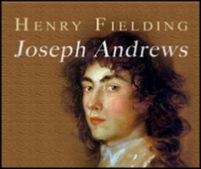 xxxxxWith a wife and two children to support, he then spent time studying law at the Middle Temple, and was called to the Bar in 1740. But he remained a "hackney writer" at heart. The following year he began writing novels, starting with An Apology for the life of Mrs Samela Andrews, a merciless skit on Samuel Richardson's somewhat emotional and prudish Pamela. This was followed by a further attack on Pamela, this time in his mock epic recounting the Adventures of Joseph Andrews. An exciting, if somewhat burlesque comedy, it featured the comic figure Parson Adams, and was written in the style of Cervante's Don Quixote. Then, returning to politics in 1743, he produced his History of the Life of the late Mr Jonathan Wild the Great, a work packed with irony in which he likened the downfall of the "hero" (a notorious criminal, in fact, hanged in 1725) to the fall from power of the country's chief minister Robert Walpole.
xxxxxWith a wife and two children to support, he then spent time studying law at the Middle Temple, and was called to the Bar in 1740. But he remained a "hackney writer" at heart. The following year he began writing novels, starting with An Apology for the life of Mrs Samela Andrews, a merciless skit on Samuel Richardson's somewhat emotional and prudish Pamela. This was followed by a further attack on Pamela, this time in his mock epic recounting the Adventures of Joseph Andrews. An exciting, if somewhat burlesque comedy, it featured the comic figure Parson Adams, and was written in the style of Cervante's Don Quixote. Then, returning to politics in 1743, he produced his History of the Life of the late Mr Jonathan Wild the Great, a work packed with irony in which he likened the downfall of the "hero" (a notorious criminal, in fact, hanged in 1725) to the fall from power of the country's chief minister Robert Walpole.
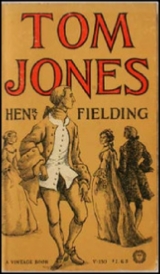 xxxxxFor the next few years he continued his involvement in political and public life. In 1745 he wrote a pamphlet strongly condemning the Jacobite invasion, led by Bonnie Prince Charlie, and then became editor of The True Patriot to continue his support for the government. The administration was so impressed with his pamphlet that they made 2,000 copies of it and distributed it throughout the country. It is perhaps not surprising that, when he came to write his great novel Tom Jones, he should tell it against the background of the Forty-
xxxxxFor the next few years he continued his involvement in political and public life. In 1745 he wrote a pamphlet strongly condemning the Jacobite invasion, led by Bonnie Prince Charlie, and then became editor of The True Patriot to continue his support for the government. The administration was so impressed with his pamphlet that they made 2,000 copies of it and distributed it throughout the country. It is perhaps not surprising that, when he came to write his great novel Tom Jones, he should tell it against the background of the Forty-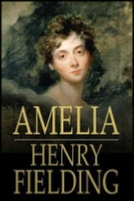 next century.
next century.
xxxxxAs noted, it was in 1749, that he produced his highly successful novel Tom Jones. This was followed two years later by Amelia, a story based on domestic life, but, whilst it had greater depth, it lacked the comic element, and was nowhere near as successful. It was perhaps for that reason that from then on he gave his time up to his public duties. In 1751, for example, he wrote his Inquiry into the Increase of Robbers, a useful contribution to crime prevention, and soon after this founded The Covent Garden Journal, a means by which the public could report crimes and provide descriptions of suspects. But such labours took a toll on his health. He had suffered from gout for many years, and in 1754 he fell ill with asthma. In June of that year he went to Portugal to seek the sun, but he died in the October and was buried in the British cemetery in Lisbon.
xxxxxFielding has been called by some the "father of the novel", and by others the "Hogarth of literature". Certainly, along with Samuel Richardson, he made the novel a major literary form. Hexwas likely influenced by the works of the Greek dramatist Aristophanes and the English writer Ben Jonson, and it would seem that the picaresque romance Adventures of Gil Blas by the French playwright and novelist Alain-
xxxxxIncidentally, Fielding was a close friend of William Hogarth. The English artist and engraver produced the frontispiece for his heroic drama Tom Thumb, and Fielding’s The Covent Garden Tragedy of 1732 was loosely based on Hogarth’s picture narrative A Harlot’s Progress.
Including:
Samuel Richardson
and Abbé Prévost

Acknowledgements
Fielding: engraving, 1825, by unknown artist – contained in Crabb’s Historical Dictionary, published in 1825. Richardson: by the English portrait painter Joseph Highmore (1692-
G2-
xxxxxSamuel Richardson (1689-
xxxxxAs we have seen, Samuel Richardson (1689-
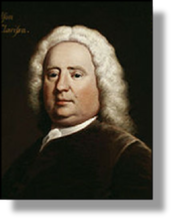
xxxxxHe was born in Mackworth, Derbyshire in 1689 and, so it would seem, received only an elementary education. His family returned to London in 1699 and it was here that he worked as an apprentice in the printing trade. He established his own business in 1721, and by the 1730s had gained a wide reputation. He was able to move to a larger house in London, where his circle of friends included the painter William Hogarth, the writer Dr. Johnson, and the poet Edward Young. At the same time, contact with members of parliament enabled him to obtain a large amount of government printing, including the production of the journals of the House.
xxxxxIn 1739, at the request of a London bookseller, he wrote a series of letters designed as models for "country readers". It was while compiling these Familiar Letters for Important Occasions, published in 1741, that he hit upon the theme for his first novel Pamela, or Virtue Rewarded. This centred around a young maid-
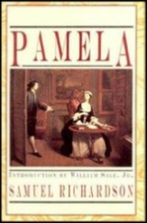
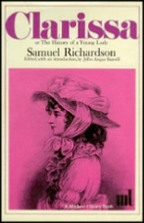 xxxxxThis was followed in 1748 by Clarissa, a more powerful work of no less than seven volumes, based roughly on the same theme but showing -
xxxxxThis was followed in 1748 by Clarissa, a more powerful work of no less than seven volumes, based roughly on the same theme but showing -
xxxxxIn his last years he continued to oversee his printing business, but enjoyed his well-
xxxxxRichardson's own life was not without its tragedy. Of the six children from his first marriage, all died before reaching the age of four, and he lost his first wife in 1731. And it was later discovered that he had suffered throughout his life from a rare bone complaint that made painful any use of his joints. He died in Parsons Green, near London.
xxxxxThe French writer Abbé Prévost (1697-
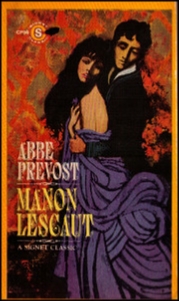 xxxxxRichardson's Pamela and Clarissa were translated into French by the writer Abbé Prévost (1697-
xxxxxRichardson's Pamela and Clarissa were translated into French by the writer Abbé Prévost (1697-
xxxxxPrévost was born in Hesdin, Artois and was brought up by the Jesuits. It would seem that his life alternated between that of a soldier and that of a monk, and that his behaviour was as questionable at times as that of his hero Lescaut. He got himself into trouble over a number of love affairs, and on one occasion was imprisoned in London on a charge of forgery. He eventually returned to France. Apart from a number of other works, he also produced a journal For and Against, similar in style to Addison and Steele's Spectator.
xxxxxIn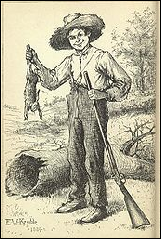 cidentally, the term picaresque can be used to describe a number of these early novels, such as Moll Flanders by Daniel Defoe, Gil Blas by Alain Lesage, and Tom Jones by Henry Fielding. Such stories tell of a low-
cidentally, the term picaresque can be used to describe a number of these early novels, such as Moll Flanders by Daniel Defoe, Gil Blas by Alain Lesage, and Tom Jones by Henry Fielding. Such stories tell of a low-


